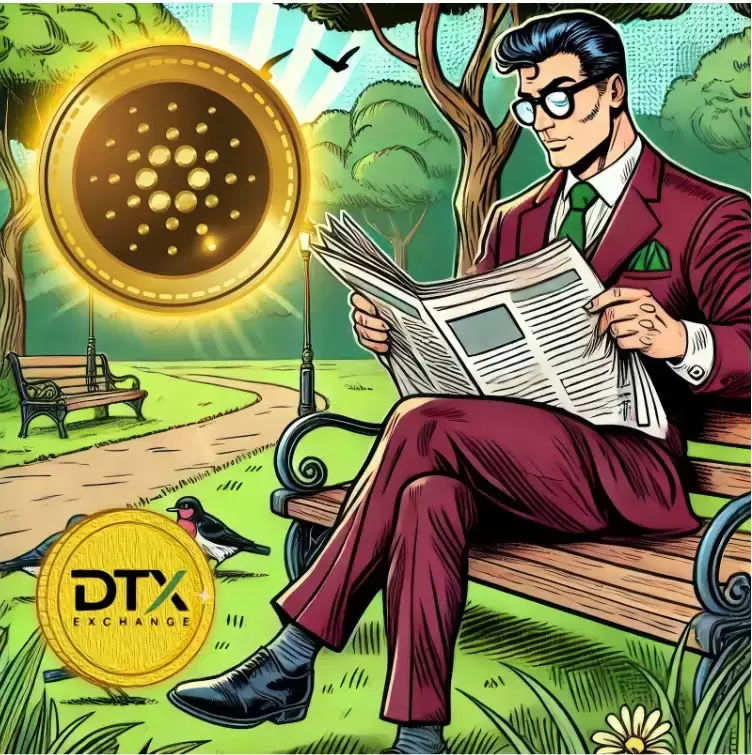 |
|
 |
|
 |
|
 |
|
 |
|
 |
|
 |
|
 |
|
 |
|
 |
|
 |
|
 |
|
 |
|
 |
|
 |
|
Cryptocurrency News Articles
As the crypto market navigates a post-regulatory shift
Mar 31, 2025 at 11:04 pm
This surge in interest comes at a critical time for the market. After a year of volatile trading, sudden meme coin explosions and sweeping regulatory overhauls

The crypto market is navigating a post-regulatory shift in 2025, and two categories of tokens have emerged as clear frontrunners: stablecoins and Layer 2 coins.
Coming at a time when the market is displaying a decreased appetite for more volatile and hyped assets, these tokens are drawing investors' attention with their promise of real-world utility and long-term scalability.
This surge in interest comes at a critical time for the market. After a year of volatile trading, sudden meme coin explosions and sweeping regulatory overhauls, the appetite for more stable and structurally important crypto assets is growing rapidly.
USD1 stablecoin backed by Trump-aligned venture makes quiet debut
One of the most talked-about developments this month is the soft launch of USD1, a dollar-pegged stablecoin deployed on Ethereum and Binance Smart Chain by World Liberty Financial (WLFI) – a decentralised finance venture linked to US President Donald Trump.
The project has yet to issue a formal announcement, but former Binance CEO Changpeng Zhao drew attention to the token on social media, prompting WLFI’s official channel to acknowledge its presence.
The token currently has over $3.5 million in supply, though WLFI has cautioned that USD1 is not yet tradable and warned the community to beware of scams. Its release coincides with speculation about the Trump family’s interest in acquiring a stake in Binance, which CZ has since denied.
More importantly, USD1 enters the market just as the Guiding and Establishing National Innovation for US Stablecoins (GENIUS) Act moves closer to a congressional vote.
If passed, the bill would provide stablecoins with a clearer regulatory framework in the US, potentially positioning USD1 as a key player in the nation’s stablecoin landscape.
What are stablecoins and why are they so important?
Stablecoins are digital assets that aim to maintain a steady value by pegging themselves to external references like the US dollar, euro, or gold. Unlike traditional cryptocurrencies such as Bitcoin or Ethereum, which are notorious for their volatility, stablecoins are designed for price stability – making them more practical for everyday transactions and less prone to speculative swings.
There are several ways stablecoins can maintain their peg. Fiat-backed stablecoins like USD1 hold reserves of actual dollars in bank accounts, ensuring each token is redeemable for a fixed amount. Algorithmic stablecoins, on the other hand, use smart contracts to control supply and demand, while crypto-backed versions use over-collateralised reserves of other tokens to maintain stability.
Stablecoins have become foundational to the crypto economy. They serve as on-chain cash, simplify trading and are widely used in decentralised finance (DeFi) platforms for lending, borrowing and yield farming. Their integration into traditional financial systems has been slower due to regulatory concerns, but legislation like the GENIUS Act may mark a turning point in stablecoin legitimacy and adoption.
Why Layer 2 coins are gaining traction in 2025
While stablecoins bring predictability to the crypto space, Layer 2 solutions offer network efficiency. As more decentralised applications flood the market, networks like Ethereum and Solana are increasingly burdened by congestion, high fees and slow transaction speeds.
This is where Layer 2 coins come in. These tokens power technologies that process transactions off the main blockchain, then batch and settle them on-chain, easing the load on the base layer. The result is faster speeds, reduced costs and a smoother user experience – all without compromising security.
Solaxy ($SOLX) is one such project. Built on Solana, Solaxy aims to tackle the network’s long-standing issues with transaction failures and network slowdowns during high-traffic periods. By processing transactions off-chain and finalising them on the mainnet, Solaxy keeps throughput high and fees low.
Solaxy’s roadmap includes cross-chain compatibility with Ethereum, automated monitoring for congestion risks and robust security architecture. Its presale has already gained strong traction and market watchers are anticipating a centralised exchange listing in the near future. However, as with any early-stage project, Solaxy still has a long way to go in proving it can deliver at scale.
Stablecoins vs. Layer 2 tokens: What should you watch?
Stablecoins and Layer 2 coins serve very different purposes in the blockchain ecosystem, but their popularity reflects the same underlying trend: investors are looking for assets with real utility, rather than hype-driven speculation.
Stablecoins like USD1 provide a stable store of value and a gateway into DeFi, while Layer 2 projects like Solaxy and DeepNet are solving some of crypto’s biggest structural challenges.
The former enables transactions and preserves purchasing power, while the latter unlocks scaling and new forms of decentralised computation.
Both are trending now because they represent the next logical step in blockchain adoption: one grounded in functionality, the other in future-proof infrastructure.
Whether you’re a trader seeking predictable liquidity or a long-term
Disclaimer:info@kdj.com
The information provided is not trading advice. kdj.com does not assume any responsibility for any investments made based on the information provided in this article. Cryptocurrencies are highly volatile and it is highly recommended that you invest with caution after thorough research!
If you believe that the content used on this website infringes your copyright, please contact us immediately (info@kdj.com) and we will delete it promptly.
-

-

- WAL, the native token of the Walrus protocol, is generating a buzz after the launch of its mainnet and airdrop
- Apr 07, 2025 at 03:20 pm
- The token also secured listings on several exchanges, including Crypto.com, and is soon to be listed on Upbit, attracting both users to trade and liquidity to the protocol.
-

-

-

-

-

- Bitcoin and crypto prices have fallen sharply, catching up with stocks that plunged in the aftermath of Donald Trump’s so-called Liberation Day of global tariffs that could become a “crisis scenario.”
- Apr 07, 2025 at 03:05 pm
- The bitcoin price has plummeted under $77000 per bitcoin, down more than 10% from its high of almost $90000 last week.
-

- An Ether (ETH) Investor Who Had a Large Position on Decentralized Finance (DeFi) Lending Platform Sky Has Been Liquidated
- Apr 07, 2025 at 03:05 pm
- An Ether investor who had a large position on decentralized finance (DeFi) lending platform Sky has been liquidated to the tune of more than $100 million
-


























































